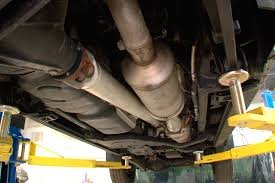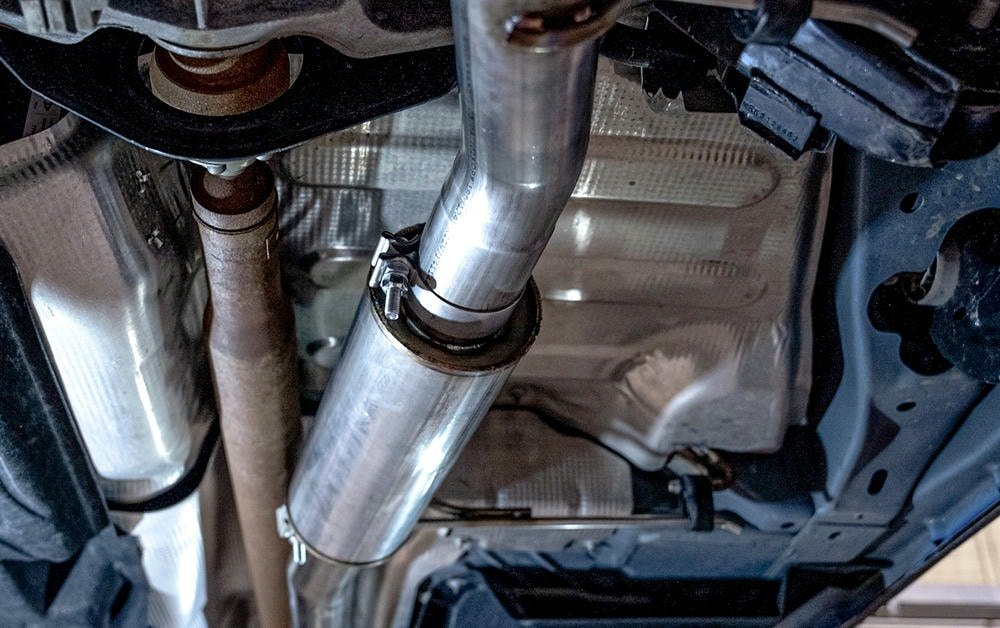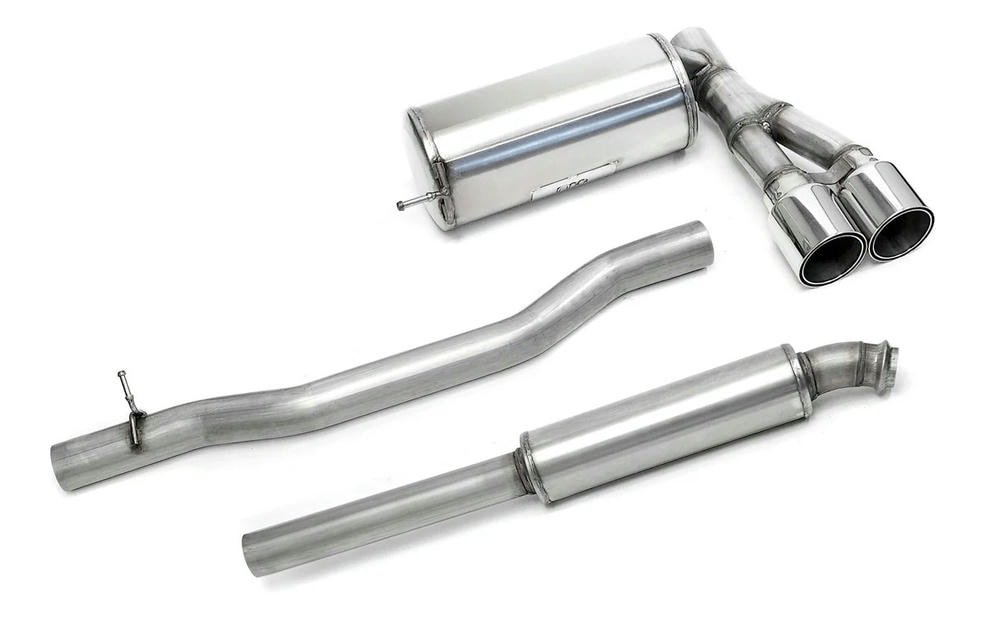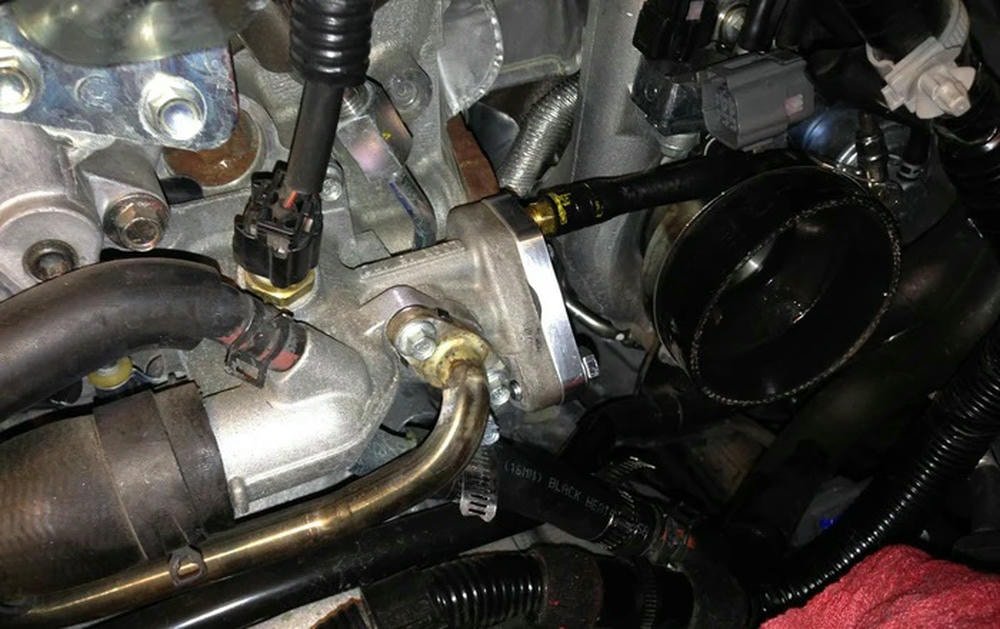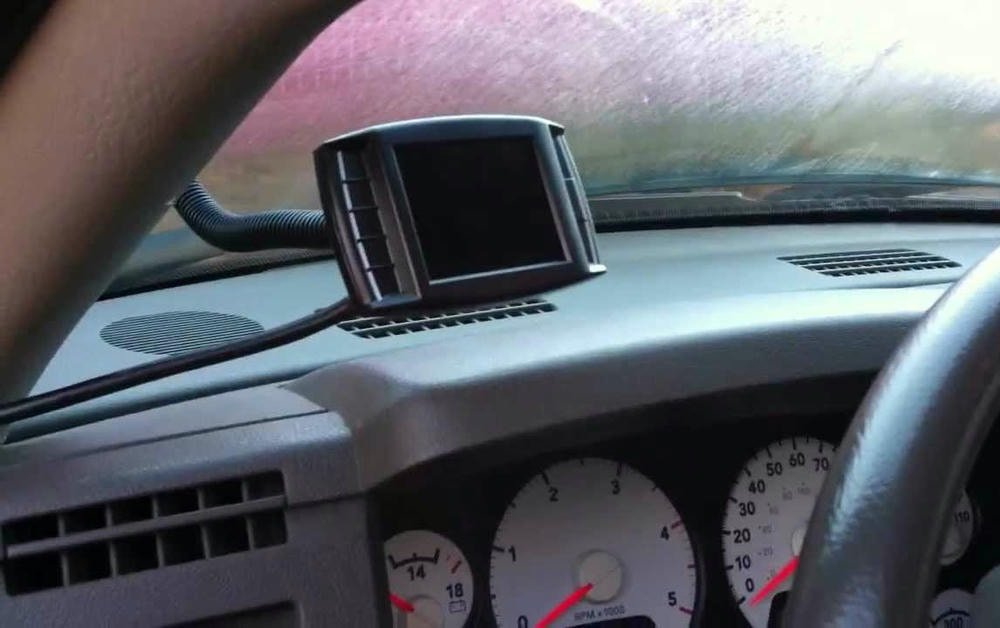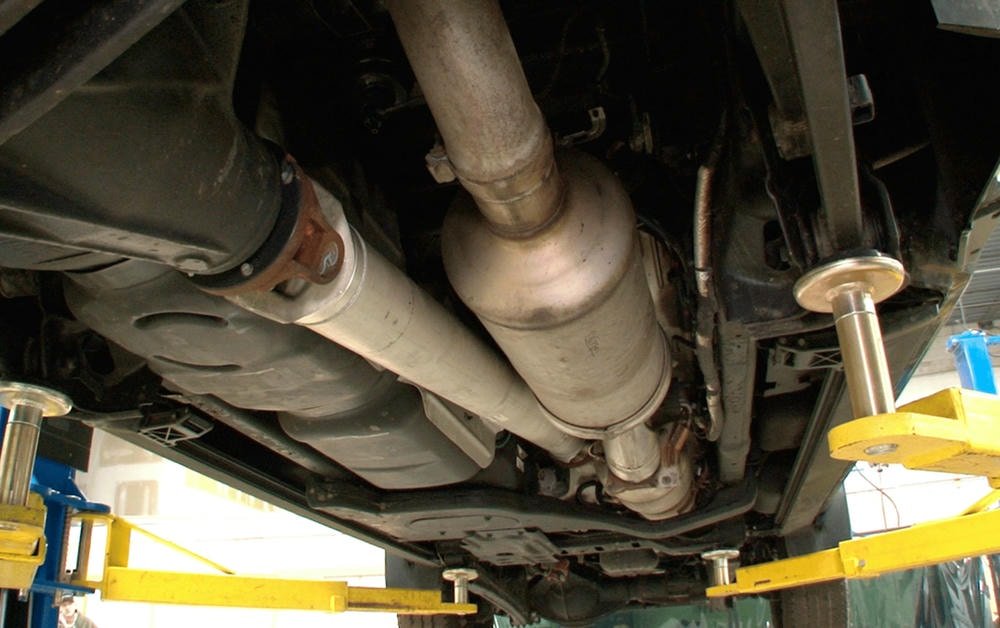Delete tuners can help diesel trucks run better. These devices make changes to the engine’s computer, or ECU, for more power. But sometimes they cause problems like errors in the ECU, poor performance, and even overheating.
Fixing these issues often means resetting the ECU or using diagnostic tools to find out what’s wrong. Regular checks and updates can keep a truck running well. This article talks about common delete tuner problems and how to solve them, with tips on avoiding trouble down the road.
Let’s explore how to keep your truck at its best.
Table des matières
ToggleCommon Issues with Delete Tuners
Delete tuners can mess up sometimes, causing truck engines to act weird. They might make the engine’s brain (ECU) go haywire or make your truck run not as well as it should.
ECU Errors and Malfunctions
ECU errors and malfunctions can trouble diesel truck owners. The ECU, or engine control unit, is the brain of your moteur diesel. It manages everything from fuel mixture to turbocharger efficiency.
If it has problems, you might see poor performance or even damage to your vehicle. Many times, these issues pop up because the delete tuner isn’t working well with the truck’s original settings.
One common sign of ECU trouble is strange behavior from your truck. This could be anything from weird engine sounds to unexpected shutdowns. Diesel tuning fixes often start with checking the ECU for error codes using a diagnostic tool—a small device that plugs into your truck’s electronic communications port, usually under the dash.
These tools read signals sent by the ECU to find out what’s wrong.
Poor Performance and Throttle Response
Truck owners know the frustration of bad performance and slow throttle. These problems can come from tuning device issues in diesel trucks like Dodge Ram and GMC Sierra 2500HD. A delete tuner might not be set up right, causing the engine to respond slowly when you press the gas pedal.
This means your truck won’t speed up fast enough.
Faulty components in the exhaust or accelerator system can also lead to poor throttle response. Sometimes, parts need a check or a change. It’s key for diesel truck drivers to keep an eye on how their vehicle reacts to commands.
If your truck is slow to pick up speed, it could mean there’s a bigger issue at hand.
Keeping your diesel truck running smoothly demands attention to detail, especially with custom tuning setups.
Check Engine Light Activation
Seeing the check engine light on your dashboard can worry any diesel truck owner. It often means something’s not right with the engine tuning or EGR system. For folks using a delete tuner to boost performance, this could signal an issue needing quick attention.
From person experience, this little light shouldn’t be ignored. Sometimes, it’s a simple fix like checking the mini USB connection of your tuning device or making sure all software updates are applied.
Fixing problems early can prevent bigger ones later. You might need to reprogram the ECU or adjust settings on your tuner. Simple steps like these can turn off that pesky light and get you back on the road fast.
Always double-check connections like the USB plug or consult with a pro if things look complicated. Diesel engine diagnostics aren’t always straightforward, but taking action early keeps your truck running smooth.
Overheating and Exhaust Problems
Trucks with delete tuners can face overheating and exhaust problems. These issues harm the engine and reduce truck performance. For a diesel truck owner, this is serious. Overheating can come from a tuner pushing the engine too hard.
It makes the travail du moteur au-delà de ses limitesLa chaleur qui en résulte est trop importante.
Pour faire face à ces problèmes, il est utile de vérifier le système de refroidissement. Un bon liquide de refroidissement maintient la température à un niveau bas. Une autre étape consiste à examiner le système d'échappement. Parfois, des pièces comme le turbocompresseur doivent être vérifiées ou réparées pour améliorer le flux d'air et réduire la chaleur.
Gardez toujours un œil sur la jauge de température de votre camion et écoutez les bruits étranges provenant de l'échappement. Si vous constatez quoi que ce soit d'inhabituel, il est peut-être temps de parler à un mécanicien professionnel qui s'y connaît en diesel. logiciel d'accordage et suppression des accordeurs.
Dépannage et résolution des problèmes
Dépannage et la résolution des problèmes Avec les tuners de suppression, vous devez appuyer sur le bouton de réinitialisation de l'ordinateur de votre moteur, ajuster la façon dont le dispositif communique avec votre camion, remplacer les pièces qui ne fonctionnent pas correctement ou obtenir l'aide de quelqu'un qui connaît parfaitement les camions.
Si votre moteur diesel se dérègle après une mise au point, il est possible d'en trouver la cause pour qu'il fonctionne à nouveau en douceur. Pour savoir comment s'attaquer à ces problèmes de front, lisez ce qui suit conseils et astuces que tout camion diesel doit savoir.
Réinitialisation et reprogrammation du calculateur
Fixation supprimer les problèmes de syntonisation commence souvent par l'unité de contrôle du moteur (ECU). L'ECU est le cerveau d'un camion diesel. performance du moteur. En cas de problème, la réinitialisation et la reprogrammation peuvent aider. Les propriétaires de camions diesel pourraient trouver ces étapes utiles.
- Débrancher la batterie : commencez par retirer le câble négatif de la batterie. Cela empêche le courant d'atteindre le calculateur, ce qui permet de travailler en toute sécurité.
- Attendez la réinitialisation : Laissez la batterie déconnectée pendant environ 30 minutes. Ce laps de temps permet aux données stockées dans le calculateur de s'effacer.
- Rebranchez la batterie : Après avoir attendu, reconnectez le câble négatif. Cela permet de rétablir l'alimentation du calculateur, qui est maintenant prêt à recevoir une nouvelle programmation.
- Utilisez un outil de diagnostic embarqué (OBD) : Branchez un outil OBD sur le port OBD du camion, généralement situé sous le tableau de bord. Cet appareil communique avec les systèmes du camion.
- Télécharger les mises à jour : Avant de procéder à la reprogrammation, vérifiez s'il existe des mises à jour. les mises à jour du micrologiciel ou du logiciel pour votre appareil de réglage ou votre modèle de camion.
- Reprogrammation avec un ordinateur : Connectez votre appareil de réglage ou votre ordinateur portable avec le logiciel approprié au port OBD à l'aide d'un connecteur USB. Suivez les instructions à l'écran pour installer les mises à jour ou effectuer les modifications.
- Ajustez les paramètres avec précaution : Lorsque vous réglez les paramètres du tuner, concentrez-vous sur l'amélioration des performances du moteur sans nuire aux autres composants tels que la transmission et le moteur. systèmes d'échappement.
- Essai de conduite : Après la reprogrammation, faites un essai routier avec votre camion. essai routier pour s'assurer que toutes les modifications fonctionnent comme prévu.
- Contrôler les performances et codes d'erreur: Surveillez les performances du moteur et tout nouveau code d'erreur susceptible de s'afficher sur le voyant de contrôle du moteur de votre tableau de bord.
- Contrôles réguliers à l'aide d'un outil OBD : Utilisez régulièrement votre outil OBD pour rechercher des erreurs et ajuster les paramètres en fonction des besoins de votre camion ou des mises à jour logicielles.
L'engagement dans ce processus permet de maintenir une performance et dépanner les problèmes courants d'effacement de tuner dans les moteurs diesel comme les modèles Duramax ou Power Stroke Diesel.
Réglage des paramètres du tuner
Le réglage des paramètres du tuner peut résoudre de nombreux problèmes de suppression du tuner. Les propriétaires de camions diesel sont souvent confrontés à des problèmes de réglage du moteur, mais le réglage de l'appareil peut faire une grande différence.
- Commencez par un vérification du diagnostic: Utilisez un scanner OBD2 pour trouver les codes d'erreur. Cet outil permet d'identifier les problèmes spécifiques qui nécessitent une attention particulière.
- Lire le manuel avec soin: Chaque appareil de réglage est accompagné d'un guide. Il explique comment ajuster les réglages pour obtenir de meilleures performances.
- Mise à jour du logiciel: Les fabricants publient régulièrement des mises à jour. Celles-ci peuvent corriger des bogues connus et améliorer le fonctionnement de votre moteur.
- Ajuster les cartes de carburant: Si votre camion n'est pas performant, il peut être utile de modifier la distribution de carburant dans la cartographie. Cela affecte la quantité de carburant qui entre dans le moteur.
- Modify shift points: For those with automatic transmissions, altering when gears shift can enhance throttle response and acceleration.
- Change tire size settings: If you’ve changed your tire size, update this in the tuner to keep speedometer and odometer accurate.
- Experiment with throttle sensitivity: Boosting this setting can make your throttle more responsive. Yet, go slowly to avoid too much power at once.
- Lower EGT (Exhaust Gas Temperature): High EGT can harm your engine. Adjust settings that affect EGT to keep it at safe levels.
- Check for compatibility issues: Make sure your delete tuner works well with any other mods on your truck.
- Recheck after adjustments: After making changes, drive for a while then scan again for errors or performance dips.
11 .Seek professional advice if unsure: Sometimes, getting help from someone more experienced is best, especially for major modifications.
12 .Keep notes of changes made: Documenting what adjustments you’ve done helps roll back if something doesn’t work out.
Tweaking these settings requires patience and sometimes a bit of trial and error. But making these adjustments carefully can vastly improve diesel engine optimization and solve common performance issues faced by truck owners dealing with delete tuner complications.
Checking and Replacing Faulty Components
Fixing delete tuner problems often means checking and changing broken parts. This is key for keeping your diesel truck running well.
- Start with the electronic control unit (ECU). This brain of your truck can cause big issues if not working right.
- Look at the oxygen sensors next. These parts help manage your truck’s fuel and air mix. If they fail, you might see bad performance.
- Don’t forget the fuel injectors. Dirty or broken injectors can make your engine run poorly.
- Vérifier le système d'échappement for damage or blockages. Problems here can lead to overheating.
- Inspect all connexions de câblage. Loose or worn wires can cause errors with your tuning device.
- Replace any old or dirty air filters. A clean filter helps your engine “breathe” better.
- Look over the throttle body for signs of wear or dirt buildup, affecting response times.
- Tester le coolant temperature sensor to ensure it’s tracking your engine heat properly.
- Use a reliable scanning tool to find codes d'erreur that point to specific problems.
For each step, if you find something wrong, it’s smart to replace that part with a new one suited for your truck model and make sure it matches well with your delete tuner settings for best results and safety.
Consulting with a Professional Mechanic
Talking to a skilled mechanic can make a big difference when fixing delete tuner issues. These mechanics have the tools and know-how to diagnose problems quickly. They use scanners and software that read your truck’s computer, finding trouble spots fast.
A good mechanic also stays up-to-date with the latest updates in tuning devices and performance tuning techniques. This means they offer solutions based on the newest information.
Don’t hesitate to ask for professional help; it could save you time and money in the long run.
They will look at every part of your diesel truck, checking things like systèmes d'échappement and faulty components that might need replacing. If your ECU needs reprogramming or resetting, they handle it safely.
Mechanics work with these problems every day, so they know what signs to look for. Trusting them with your vehicle ensures you get back on the road without risking more damage.
Preventing Future Issues
Keeping your diesel truck running smoothly means taking care of it before problems start. This includes regular check-ups and keeping an eye on engine health to catch issues early.
Regular Maintenance and Updates
Regular maintenance and updates are key to keeping your diesel truck running smoothly, especially if you’ve installed a delete tuner. These steps will help prevent common issues and ensure your engine performs at its best.
- Vérifier le engine oil level and quality often. Clean oil is crucial for the engine’s health. Change it as the manufacturer recommends.
- Update your delete tuner software regularly. Tuner manufacturers release updates to improve performance and fix bugs.
- Moniteur les niveaux de liquide de refroidissement to avoid overheating. The cooling system keeps your engine at the right temperature.
- Inspect air filters every few months. A clean air filter improves engine efficiency and power.
- Keep an eye on système d'échappement integrity. Regular checks can spot leaks or damage early.
- Scan for error codes with a diagnostic tool often. This helps identify problems before they worsen.
- Ensure all connections to the delete tuner are secure and corrosion-free. Loose or dirty connections can cause malfunctions.
- Get professional checks annually or bi-annually, even if no problems seem evident—especially important for parts that require expert inspection.
- Follow forums and communities for your vehicle type or delete tuner brand for tips, software updates, and known issues shared by other users.
10.Regularly check tire pressure and wear since proper tires support engine performance indirectly by ensuring better fuel efficiency and stability on the road.
Following these steps will help solve troubleshooting issues related to delete tuners, like poor performance or throttle response, ECU errors, check engine lights, overheating, and exhaust problems before they become major headaches.
Monitoring Engine Performance
Keeping an eye on engine performance is key to solving delete tuner problems. Use tools like OBD-II scanners to check for error codes in the truck’s computer system. These gadgets give real-time info about the engine, such as temperature and fuel efficiency.
Watching these signs helps catch issues early before they grow big. People who own diesel trucks often talk about using gauges and monitors to keep tabs on their engines’ health. One owner shared how he spotted a drop in power right away thanks to his dashboard setup.
Monitoring my truck’s performance has saved me more times than I can count.
Troubleshooting delete tuner issues means paying close attention to your engine’s behavior after tuning adjustments. Sometimes, what seems like a huge issue is just a need for small tweaks here and there.
Regular checks ensure that everything runs smoothly, making every drive worry-free.
Staying Informed on Software Updates
Keeping your delete tuner working right means staying up to date with software updates. These updates can fix bugs, improve performance, and add new features. To start, sign up for email alerts from the tuner’s maker.
They’ll let you know when there are updates. Also, join online forums where diesel truck owners talk about tuning devices. Here, people share tips and news on the latest updates.
Toujours utiliser official websites for downloading updates to avoid viruses or wrong software. Before updating, read instructions carefully to prevent errors during installation. Some diesel truck owners might find this task tricky but taking it step by step makes it manageable.
Conclusion
Fixing delete tuner issues can be complex. Alex Rodriguez, an expert in diesel engine tuning, has worked in the field for over 20 years. He studied mechanical engineering and holds several patents in engine performance enhancements.
His work helps truck owners get better mileage and power.
Alex says that fixing these problems starts with understanding the ECU’s role. The ECU controls how a diesel engine works. When tuned correctly, it improves performance without harming the engine.
But when things go wrong, like poor throttle response or check engine lights coming on, knowing how to reset and reprogram the ECU is key.
He highlights safety as crucial. Delete tuners can make engines run hotter than usual which risks damage if not monitored closely. Transparency about changes made during tuning is important too.
Truck owners should know what modifications could affect their warranty or break laws.
For everyday use, Alex recommends regular checks on tuner settings and updates from manufacturers to avoid common issues like overheating or reduced performance.
He compares delete tuners against other market options favorably but warns they’re not fit for every truck owner depending on their needs and local emissions laws.
Finally, Alex believes that for those who understand them well enough, delete tuners offer valuable benefits by increasing efficiency and power output of their trucks when used responsibly.
FAQ
What are some tips to troubleshoot delete tuner issues?
Troubleshooting delete tuner problems can be a breeze with the right steps. Start by clearing cookies from your network and checking your storage space. If these don’t work, try reaching out to online fora for more problem-solving tips.
How can I fix common delete tuner problems?
Fixing delete tuner issues involves a few key steps. First, ensure your tuning device is working properly and that you have enough storage on it. Then, clear any unnecessary data or cookies from your network that might be causing the issue.
Why am I having trouble with my delete tuner?
Delete tuner issues could stem from various factors such as an overloaded network, insufficient storage space on your tuning device or even too many stored cookies interfering with its operation.
Where can I find help if I’m struggling to solve my delete tuner problems?
Fora are great places to seek advice when dealing with tricky technical issues like this one! There’s usually someone who has encountered similar challenges and they’re often willing to share their troubleshooting tips.

